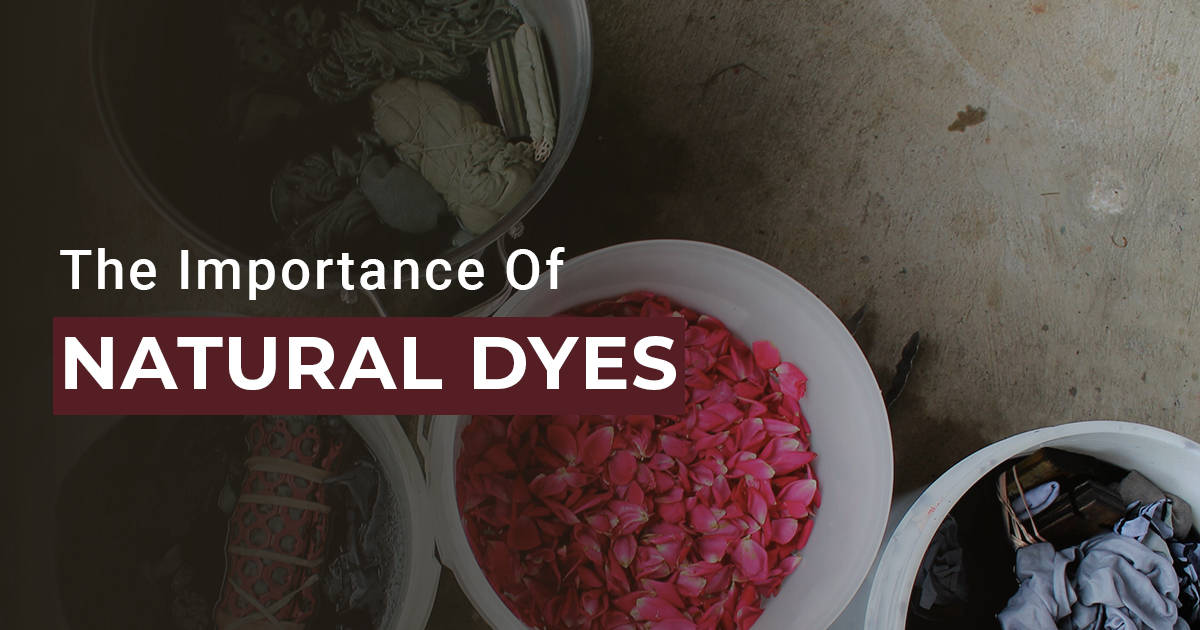As countries become increasingly cautious about the impact of their textiles and garments on the environment and public health, interest in using natural dyes in textile production is reviving.
Synthetic dyes cause toxic and allergic reactions, prompting people to adopt natural dyes in their businesses. Natural dyes are obtained from renewable sources of coloring materials. To make an informed decision about using natural dyes for your business, you need to know the importance and pros and cons of natural dyes.
Apart from textiles, natural dyes are used in various applications, such as the coloration of foods, medicine, and handicraft items. Although some natural dyes are eco-friendly, protecting your skin and providing pleasing color to the eyes, some aren’t completely eco-friendly and may be harmful to some extent.
To achieve completely eco-friendly textiles, it will be necessary to conduct new research on the application of natural dyes. In this article, you will learn the importance of natural dyes, their advantages and disadvantages, and how they are becoming more popular today.
Importance of Natural Dyes
Natural dyes have been essential in our daily lives for decades, providing more effective and valuable uses with aesthetic consumer satisfaction. Indigo is one of the oldest and most widely used dyes, commonly used in India for thousands of years.
Natural dyes are dyes or colorants derived from natural sources like plants, animals, or minerals. They can also be produced from biological sources, including vegetables and fungi.
Although natural dyes have been popular among humans, they have quickly fallen out of favor due to the convenience and versatility of synthetic dyes.
Environmental Benefits
a. Bio-degradability
One of the most compelling reasons to choose natural dyes is their biodegradability. Synthetic dyes from toxic chemicals can stay in the environment for years, polluting water and harming aquatic life.
On the other hand, natural dyes break down over time, leaving no long-lasting harmful impact.
b. Reduced Water Pollution
Synthetic dyeing processes are notorious for causing water pollution. According to the article, textile industries that rely on artificial dyes release vast amounts of wastewater filled with chemicals.
In contrast, natural dyeing uses less water and often requires fewer harsh chemicals, making it a cleaner, greener process.
c. Sustainable Sourcing
Many renewable resources derive from natural dyes. For example, people explicitly cultivate plants like indigo, madder, and wool for dyeing.
These dyes support sustainable farming and help plants grow naturally, reducing the need for harmful pesticides and fertilizers.
Health Benefits
a. Non-Toxic and Safe for Sensitive Populations
Synthetic dyes often contain heavy metals, carcinogens, and other harmful substances that can damage the environment and human health.
Conversely, natural dyes come from organic sources, making them safer for people with sensitive skin or allergies and reducing exposure to harmful chemicals.
b. Antimicrobial Properties
Some natural dyes, such as those derived from certain plants and insects, have been found to possess antimicrobial properties. These properties help stop bacteria growth, making natural dyes an excellent choice for clothing, linens, and other textiles that frequently touch the skin.
The Vibrant Colors and Unique Appeal
a. Rich, Diverse Palette
Natural dyes are known for producing rich, deep, and varied colors. Unlike synthetic dyes, which use a standardized color palette, natural dyes create subtle variations, making each piece unique.
Whether dyeing fabric or creating artwork, the rich colors produced by natural dyes are one of their most admired qualities.
b. Cultural and Historical Significance
Natural dyes have a long and diverse history across cultures. From the deep red hues of cochineal in South America to the indigo blue in Japan and Africa, these dyes carry cultural significance and often tell a story.
Using natural dyes allows us to connect with these traditions and keep these age-old techniques alive in modern times.
Read More: Types of Natural Dyes
Advantages of Natural Dyes
Let’s take a look at the following advantages of natural dyes:
1. Minimal Environmental Impact: Natural dyes have a very low environmental impact compared to other dyes as they are produced from natural sources, making them appealing to customers. Disposing of natural dyes does not cause any pollution as they are biodegradable.
2. Color pay-off: Natural dyes are a perfect choice when you’re looking for a soft hue or soothing shade.
3. Safe & Security: A few natural dyes, like carmine, found in lipsticks, don’t appear to cause harm or health problems when used.
4. Renewable: Natural dyes can be harnessed without further harming the environment, as they are obtained from renewable sources.
Disadvantages of Natural Dyes
The following are some disadvantages of natural dyes:
1. Cost: Compared to synthetic dye, many natural dyes are required to dye a specific fabric.
For example, you need five grams of synthetic dye for one pound of cotton. In contrast, you would require around 230 grams of natural dye to dye the same material. Thus, it can be said that natural dyes are more expensive than synthetic dyes.
2. Harmful Effects: Natural dyes can also cause harm to some extent, and can not be proven to be user-friendly. When inhaled, ingested, or absorbed through the skin, the active ingredients in logwood, hematein, and hematoxylin can be harmful and might not be considered eco-friendly.
The inhalation of bloodroot, another natural dye source, can irritate the lungs. Moreover, natural dyes may need to be mordant-treated before being applied. They can also be toxic, even though they aid the dye in sticking to fabrics. Aluminum, copper, iron, and chrome are a few examples of mordants used in natural dyes.
3. Availability: The second disadvantage of natural dyes is their lack of availability. Raw materials are not always readily available and can vary seasonally, geographically, and by species, while synthetic dyes can be produced throughout the year in laboratories.
4. Sustainability: Although natural dyes are renewable, producing them requires vast amounts of land, posing a sustainability challenge.
5. Color pay-off: Natural dyes fade color faster than synthetic dyes. Furthermore, natural dyes may not offer the same level of consistency as artificial dyes.
Applications of Natural Dyes
Natural dyes are widely used in various applications, including foods, medicines, cosmetics, textile coloration, and so on. In addition, natural dyes can also be used in small amounts to color leather, shoe polish, cane, paper, candles, wood, and so on.
Natural dyes are also used as pH indicators in the textile, pharmaceutical, and cosmetic industries.
Conclusion
Therefore, natural dyes have advantages and disadvantages. Whether you decide to use them for your business depends on several factors, most of which relate to your needs and goals. Their impact on the environment should also be considered.
As stated above, natural dyes have a minimum environmental impact compared to synthetic dyes. Other factors like cost, availability, and sustainability must also be considered. Consider whether natural dyes meet the specific business needs of your production volume, and then make a thoughtful decision accordingly.
If you are looking for modern ways to use dyes that are within your budget and don’t harm the environment, working with Hridhan Chem can help. Hridhan Chem is a leading manufacturer and exporter of premium-quality industrial dyes at competitive rates. If you are interested in our products and services and want to know more about us to see how we can help you, contact us today.



